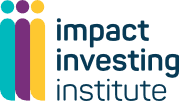Introduction
How to use these resources
Resources in this module

Glossary of terms
We have put together a glossary of terms for impact investing
Filter resources by level:
Objectives and frameworks
There are no Advanced resources for this topic
Target beneficiaries – how to identify them and how they can be impacted
There are no Advanced resources for this topic
Key social and environmental challenges and how impact investing can channel capital to them address them
-
Impact Investing Market Map

United Nations Principles for Responsible Investment
Reading time: 8-10 hours
Through this market mapping report, PRI adds clarity to the process of identifying impact investing companies and thematic investments so that asset owners and fund managers can better assess opportunities in the market. The Market Map also contains information about environmental and social thematic areas of impact investments and businesses that, by their nature, intend to contribute to sustainability and the SDGs.
What the reviewer found helpful:“The Market Map targets companies and businesses (in the real economy) that operate in the impact investing field, not just (impact funds) or investment vehicles.”
Kate Munuka
Advanced
Growth drivers and constraints
There are no Advanced resources for this topic

